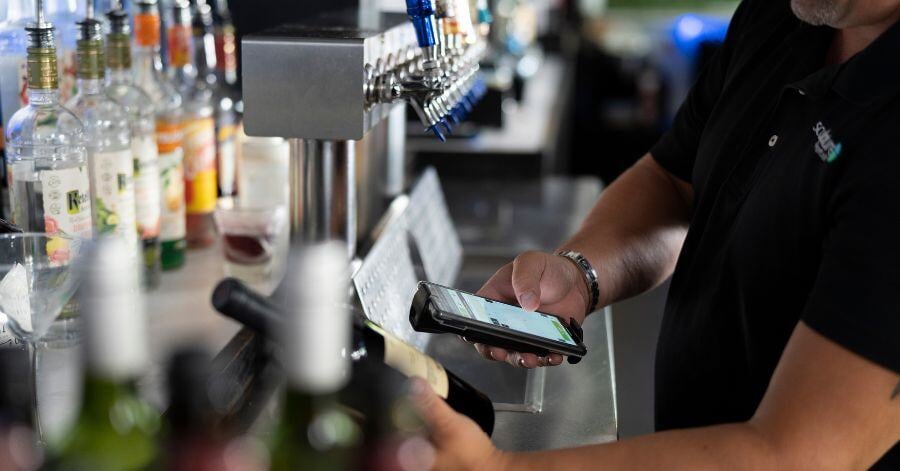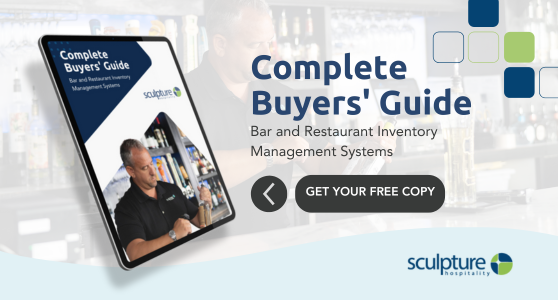Keeping all of the moving parts in your restaurant in sync can be tricky. Doing it while staying efficient, streamlined and not overwhelmed can be even more difficult.
From tracking inventory and scheduling staff to managing customer relationships and online reviews, there’s no doubt that as a restaurant owner you have a lot on your plate. Let’s be real, you're probably way too busy to handle all of this manually.
The right restaurant management tools aren’t just about efficiency; they’re about giving you your time back. They help streamline operations, reduce food waste, keep employees happy, and even boost customer loyalty.
Imagine taking a real vacation without worrying about whether your restaurant is running smoothly. No, we’re not joking. With the right tools, that’s actually possible.
In this blog, we'll walk you through the best restaurant management tools across different aspects of your business, ensuring you have everything you need to run a profitable, efficient, and stress-free restaurant.
What are Restaurant Management Tools?
Restaurant management tools are software and systems designed to automate, streamline, and enhance different areas of restaurant operations. They range from point-of-sale (POS) systems that track sales and process payments to inventory management software that helps reduce waste and optimize stock levels.
When used effectively, and better yet, when integrated, these tools can help restaurant owners improve profit margins, reduce inefficiencies, and create a better experience for both staff and customers.
Let’s dive into the must-have restaurant management tools every owner should consider.
10 Important Restaurant Management Tools
1. Point-of-Sale (POS) SystemA POS system is the backbone of restaurant transactions. It processes payments, tracks sales, and integrates with other management tools like inventory systems and accounting software.
The best POS systems do way more than just ring up sales. They help with tracking real-time sales data, managing menu changes, splitting bills, and handling different payment types seamlessly. A well-integrated POS system provides restaurant owners with valuable insights into customer behaviour, allowing them to make smarter business decisions.
Beyond transactions, modern POS systems integrate with other restaurant tools to create an all-in-one management hub. They can connect with inventory software to help track ingredient usage and cost fluctuations or integrate with loyalty programs to encourage repeat business. With a smart POS in place, restaurant owners gain better control over revenue streams and profitability
2. Inventory Management SoftwareFood waste is a silent profit killer, and without proper inventory tracking and control, it’s easy to over-order, mismanage stock, or let ingredients expire. Inventory management software gives restaurant owners complete control over their food supply by tracking ingredient usage, optimizing stock levels, and reducing waste.
With real-time tracking, you can monitor what’s being used the most, flag items that are running low, and even automate reordering for essential ingredients. This prevents stockouts and over-ordering, helping maintain a more balanced and profitable inventory.
A key advantage of inventory management software is how it works hand-in-hand with your POS system. The two aren’t competitors, when integrated, they provide real-time insights that help maximize profit margins by ensuring food costs align with menu pricing.
3. Employee Scheduling and Workforce ManagementLabour costs are one of the biggest expenses for restaurants, so getting scheduling right is crucial. Workforce management tools help streamline scheduling, track labour costs, and ensure compliance with labour laws and overtime rules.
Automated scheduling eliminates manual scheduling errors, preventing conflicts and ensuring staff coverage during peak hours. Many systems also offer time tracking and payroll integration, making it easier to manage wages, overtime, and tax deductions.
Beyond schedules, these platforms improve staff communication and satisfaction by allowing employees to request shift swaps, clock in digitally, and receive instant updates about schedule changes. Happier employees lead to a more efficient, engaged workforce.
4. Online Ordering and Delivery ManagementMore people than ever are ordering food online, whether through third-party platforms or directly from a restaurant’s website. In fact, in Canada alone online food delivery services generated $18,990.9 million in revenue in 2024. Without the right tools, managing multiple delivery channels can become overwhelming for your restaurant.
A solid online ordering and delivery management tool consolidates orders into one platform, reducing manual entry errors and ensuring smooth coordination between the kitchen and delivery staff. It can also integrate with popular services like Uber Eats, DoorDash, and SkipTheDishes, helping restaurants reach a wider audience without adding complexity.
For restaurants managing their own delivery, these tools provide route optimization and driver tracking, ensuring food reaches customers fresh and on time. The data collected also offers insights into customer preferences and delivery trends, helping refine menu offerings and promotions.
Want to get into online ordering? Check out our blog, How to Create an Online Ordering Strategy for Your Restaurant.
5. Table Reservation and Waitlist ManagementNo restaurant wants customers to leave because of long wait times. A table reservation and waitlist system allows guests to book tables in advance and provides accurate wait-time estimates for walk-ins.
These systems improve seating efficiency by optimizing table turnover, ensuring that customers aren’t left waiting too long while tables sit empty. By integrating with POS systems, they also help restaurants track customer history and preferences, allowing for a more personalized dining experience.
Many modern reservation tools offer SMS notifications, allowing diners to wait off-premises without worrying about losing their spot. This creates a better overall customer experience, reducing frustration and increasing guest retention.
6. Customer Relationships Management (CRM) and Loyalty ProgramsWant customers to keep coming back? A CRM and loyalty program helps restaurants build strong relationships with guests through personalized marketing and rewards.
CRMs track customer preferences, visit frequency, and order history, allowing restaurants to tailor promotions and special offers. Automated email and SMS marketing campaigns help keep customers engaged, while loyalty programs encourage repeat visits by rewarding diners for frequent purchases.
With the right system, restaurants can foster deeper connections with their patrons, creating a more personalized and memorable experience that drives long-term customer loyalty.
7. Accounting and Financial ManagementAccurate financial management is key to a restaurant’s success. Restaurant-focused accounting software helps business owners track revenue, expenses, and payroll in real-time. These platforms streamline invoicing, expense tracking, and tax reporting, reducing the burden of manual bookkeeping. Many also integrate with POS and inventory systems, providing a complete financial picture of the business. Or if you prefer, just pay an accountant to do it!
8. Kitchen Display SystemsSay goodbye to paper tickets and hello to organized, digital kitchen screens. A KDS system improves kitchen efficiency by displaying orders in real time, reducing miscommunication between front-of-house and kitchen staff.
Orders are automatically updated as they progress, minimizing delays and errors. By integrating with the POS system, KDS ensures seamless order flow, keeping chefs and servers on the same page. For fast-paced restaurants, a well-implemented KDS system can significantly boost service speed and order accuracy, improving customer satisfaction and kitchen workflow.
9. Reputation Management and Review MonitoringIf you don’t know already, online reviews can make or break a restaurant. A review monitoring tool helps restaurants track and respond to reviews on platforms like Google, Yelp, and social media. By actively engaging with reviews (whether positive or negative) restaurants can enhance their online reputation, resolve customer complaints, and build trust with potential diners.
10. Marketing and Social Media Management ToolsHaving a strong digital presence can help your restaurant attract new customers and bring in additional foot traffic. Marketing tools help with social media scheduling, email campaigns, and ad management, making it easier to stay consistent with promotions and branding.
From Instagram-worthy food photos to targeted email promotions, these tools streamline the marketing process, ensuring that restaurants reach the right audience at the right time.
To get started with restaurant marketing, read our blog - Your 10-Step Guide to Restaurant Marketing.
Are you ready to improve your profit margins? Sculpture Hospitality’s team of inventory experts and software are here to help. We’d love to set up a consultation and show you how you can use our inventory experts and technology to boost profitability and regain your own personal time.







%20-%20blog%20banner.jpg?width=520&height=294&name=Your%20Complete%20List%20of%20Restaurant%20Industry%20Statistics%20(2025)%20-%20blog%20banner.jpg)


